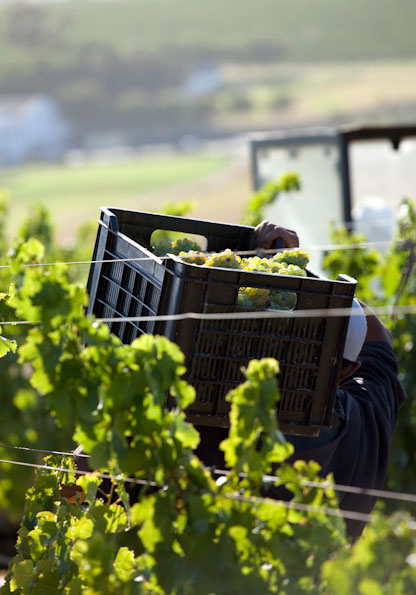With the 2020 wines now safely in either barrel or full tanks, it is worth looking over the season that was, and the conditions that gave rise to this year’s unique wines.
Winter 2019
Looking at various accumulated rainfall data, it appears that we actually had less rain in and around Stellenbosch than for the preceding vintage. Most records show approximately 10% less rainfall for the year on year comparison. An exception is the Theewaterskloof weather station which recorded a higher rainfall for the 2019 year. Significant as this is the largest supply of irrigation water for Stellenbosch grape farmers.
(Worryingly for the present year, current rainfall figures in much of the Winelands are low by comparison for the same period measured against the long-term average).
Spring 2019
The months of August-October were warm and dry, resulting in a rapid, even budburst early in the season. Strong vegetative growth required careful vineyard canopy management and the control of weeds was critical. We are slowly but surely learning how best to manage our weeds with the aid of a mechanical undervine weeder in order to stop using Glyphosate (Roundup). Thus far the results are very encouraging.
Veraison started early in December and went to completion quickly and evenly for the most part, leading us to the business end….
Harvest 2020: January to March
With dry conditions, yet mild temperatures throughout January, the vines were able to function optimally resulting in a harvest that arrived very early by comparison to historical records. Our first grapes were picked on the 13th January- Pinot Meunier for our MCC, and from the beginning we knew that one of the features of the 2020 harvest was going to be high levels of malic acid in the grapes. That aside, the pH and TA levels in the fruit this year has been very good overall, even taking malolactic fermentation and the subsequent lowering of TA into account.
By the time the heat of February arrived we had harvested most of our white grapes, working a mental 2 week period of non-stop harvesting in order to bring the whites in with as much natural acidity as possible- a feature of Mulderbosch’s house style…
All our white varieties this year look excellent, however Chenin Blanc and Chardonnay seem to stand out, perhaps benefitting from the above average acidity levels that are par for the course for Sauvignon Blanc.
Merlot, Malbec and Cabernet Franc were harvested early in February, whilst Cabernet Sauvignon and Petit Verdot were picked from late February into the first week of March. Probably the earliest we’ve ever completed harvest at Mulderbosch.
There is a brightness of fruit and a purity of character in the Merlot and Cabernet Franc that I have not often experienced which bodes well for the 2020 Faithful Hound blend.
Across the board the red wines have a satin-textured tannin profile, and a richness of flavor which I can only ascribe to the optimal functioning of the vines in the lead-up to harvest.
Given the healthy condition of the crop, the mild weather experienced in January and subsequent good acid levels this year, it goes without saying that 2020 will be remembered.
– Adam Mason

